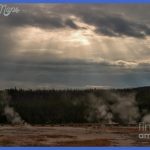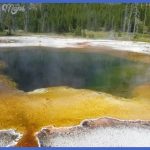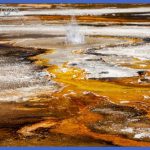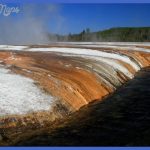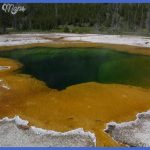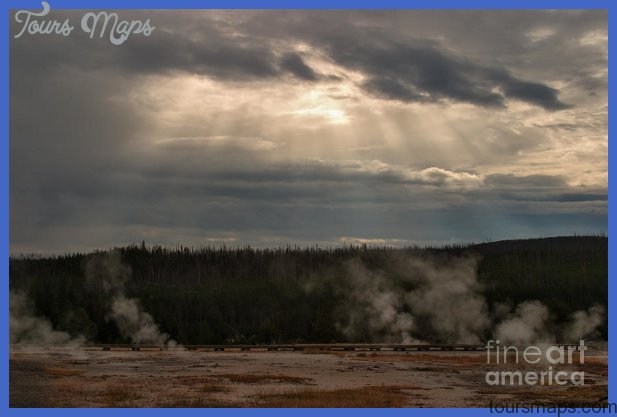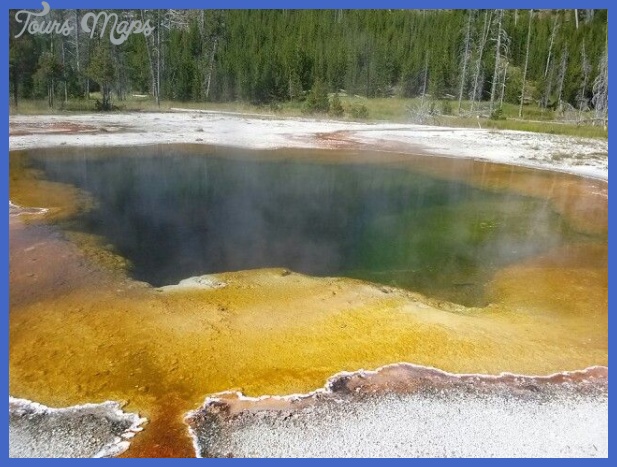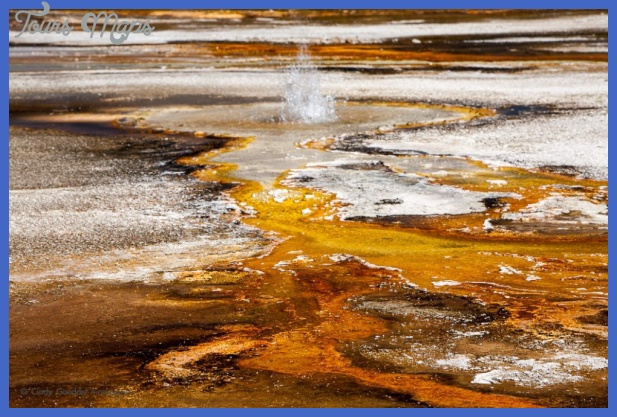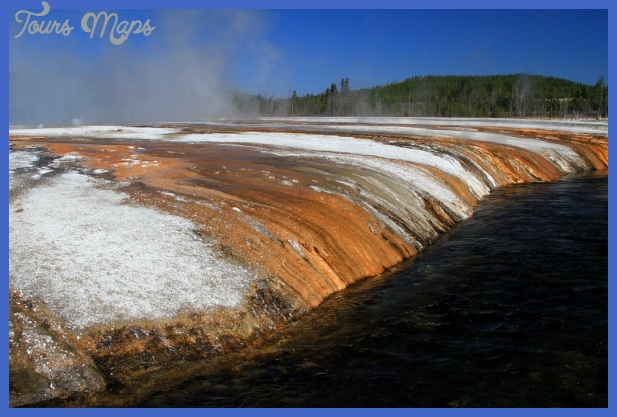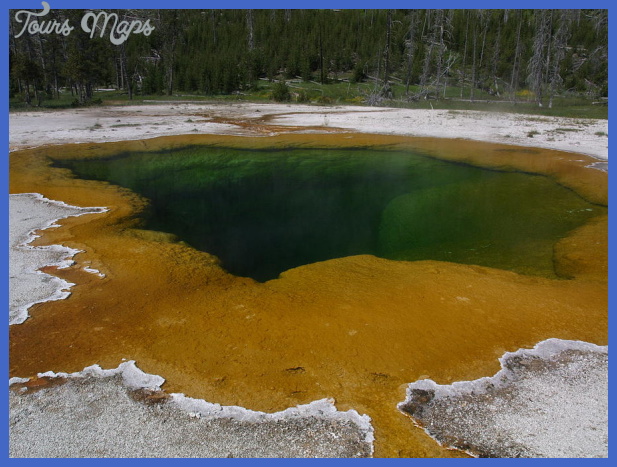NOTE: c This hot spring area is accessible to wheelchairs, but has no curb cut. See the map on 83. If you take the sidewalk a short distance back along the entrance road, you’ll see a couple of spouters, appropriately named The Grumbler (splashing angrily below the sidewalk) and Spouter Geyser. Spouter’s runoff has fed the double ob- long of Opalescent Pool, long a popular subject for color photographers. When Spouter is not very active, Opalescent Pool becomes smaller and less colorful. The geyserite mound southeast of the parking area indicates that there has been Handkerchief Pool was once famous for drawing down and regurgitating tourists’ handkerchiefs. a geyser here for a very long time. It’s been seen (and heard!) to erupt enough times to earn the name Whistle Geyser. Its rare eruptions are characterized by a powerful steam phase, described in a 1931 newspaper article as sounding like about four locomotives at a distance, with a shrill, ringing tone to it. As you start along the main boardwalk, Jagged Spring and its smaller neighbor Ragged Spring are the first features you meet. Actually geysers, they play in unison almost constantly, and Jagged may erupt as high as 15 feet (5 m).
Cliff Geyser across the creek is likely to be erupting, and its major eruptions may go to 40 feet (12 m) high from a full pool, then drain the pool suddenly and completely. Large and sometimes gloriously colored Green Spring to the left (south) of the walkway can occasionally act as a geyser. Turning right when the boardwalk forks, you’ll see several bubbling and spouting holes. The most vigorous of these in recent years has been the formerly famous Handkerchief Pool. One hundred years ago tourists would place a handkerchief in the water near the edge, watch it be drawn out of sight by convection currents in the water, and then reappear, sometimes in another vent. During the 1920s, someone jammed logs into Handkerchief Pool, effectively killing it. Some years later sucient trash was removed from the pool to partially restore its activity, but it’s now filled with sinter. Thick beds of cyanobacteria usually surround it. Occasionally in recent years, it’s come back to life as a small geyser. Rainbow Pool and Sunset Lake are brightly colored big pools at the boardwalk’s end. Both of these have acted as geysers but have not erupted in the past several years. Sunset in particular sometimes boils up a few feet at its center, creating large steam clouds. When conditions are right and Sunset Lake is at its hottest, you’ll see impressive concentric waves and reflections of color in the steam.
As with all these hot springs, the colors around the periphery come from mats formed of archaea, bacteria, and algae. A separate stretch of boardwalk to the south takes you to Emerald Pool. This is one of the most famous pools in Yellowstone and is a truly unusual deep emerald green at its center with orange around the edges. The bacteria can grow inside this pool due to its relatively cool temperature (around 150°F/66°C). But watch out! It’s not cool enough to touch! Emerald Pool’s green is created by a combination of blue water and yellow bacteria. A trail you might want to take from here joins the main walkways around Upper Geyser Basin in just under a mile (1.5 km). Park in the Black Sand Basin parking lot and cross the Grand Loop Road (carefully!) opposite the parking lot entrance. The first thermal feature on this former main road segment is Black Sand Pool in about 0.3 mile (0.5 km). Features on this trail are described from its Daisy Geyser end on s 100-102.
Black Sand Basin Walking Tour Yellowstone Photo Gallery
Maybe You Like Them Too
- The Best Cities To Visit in The World
- World’s 10 Best Places To Visit
- Coolest Countries in the World to Visit
- Travel to Santorini, Greece
- Map of Barbados – Holiday in Barbados

